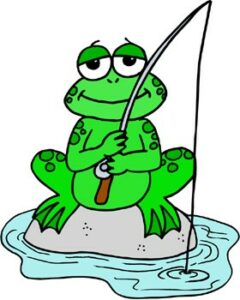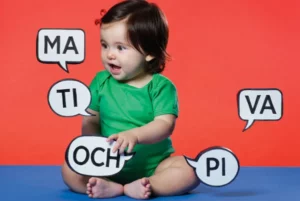LESSON 2.9
Major Grammar
Grades 7 - Adult

Sentence Fragments
Finding and fixing fragments is one of the hardest things for some students to do. Often, that’s because they cling to what they have been taught in school:
- Most teachers and textbooks define sentence fragment as “an incomplete thought.” However, all thoughts are incomplete. For example:
He is there. Who is he? Where is he?
Yet He is there is a sentence.
Many other teachers say a sentence has “a subject and a verb.” However:
If she can go. This has a subject (she) and a verb (can go), but it’s a fragment.
Babies and Language
 Sentence is based on sound, not meaning. We know that babies have a sense of what a sentence sounds like even before they can say their first word. Scientists are unsure how children learn syntax – the order of language – so young. They learn diction (words) from imitation but not syntax.
Sentence is based on sound, not meaning. We know that babies have a sense of what a sentence sounds like even before they can say their first word. Scientists are unsure how children learn syntax – the order of language – so young. They learn diction (words) from imitation but not syntax.
In fact, scientists do not even agree on when a child learns syntax.
- Some say they are born with the knowledge, that knowing syntax is part of being human.
- Others say they learn it in the womb, from hearing the rhythm of the mother’s speech.
- Still others say they learn it in the first few weeks or months.
Whatever the case, children naturally know the order of language. But then, in school, they are taught to think about the order of language, and they start doubting themselves.
So What Is a Sentence?
When you check for fragments, try not to think. Go by sound. If a group of words sounds like a sentence, then it’s usually a sentence.
If it sounds funny, meaning awkward, then it’s probably a sentence fragment.
Sentence Busters
If a group of words begins with one of the following words, then it’s usually a fragment. That’s why these are called “sentence busters”: they usually turn sentences into fragments.
- After
- Although/Though
- Because/Since
- Before
- If
- In order to
- So that
- Unless
- Until
- When/Whenever
- Where/Whereas
- While
Task 2.9.1 – Tandem

List A
- If Fred can go.
- I will ask my mother.
- Turnips have an awful.
- Cats chase rats
- Sixty-six pencils, 22 pens, and enough paper so that each student has plenty.
- Because Sam is never right about carpentry.
- Winston always runs.
- Bananas that have not been peeled.
- She is always angry.
- The mice in the attic.
Now Person B will read List B. Person A will write down whether it is a sentence (S) or a fragment (F).
List B
- A circus was in town yesterday.
- Jessica yelled.
- The color yellow is without a doubt.
- Whenever Jackson was supposed to turn in a paper.
- The third planet from the sun.
- The desk with the broken leg.
- Unless Roberta brings her permission slip on time tomorrow.
- A cry flew up from behind the chicken coop.
- Ask me tomorrow.
- The baby gurgled.
Task 2.9.2 – Tandem
Do the following in the order below:
- Highlight the paper. Go to Review > Editor > Grammar. Check the suggested changes.
- Read your paper aloud. Listen for “sentences” that do not sound right; have your partner do the same. If a “sentence” sounds wrong, then rewrite.
- Check for “sentences” starting with any of the sentence busters. They are probably fragments.
Run-on Sentences
Run-on sentences refers to sentences that are run together. There are two types:
- Two sentences run together without punctuation.
- Two sentences run together with a comma.
Textbooks often give us several ways to fix run-ons. The easiest way, however, is to make two sentences. Good writing usually has short sentences. They are easier to read and understand.
Task 2.9.3 – Tandem
- Highlight the paper. Go to Review > Editor > Grammar. Check the suggested changes.
- With a classmate, look for long sentences. They are probably run-ons.
